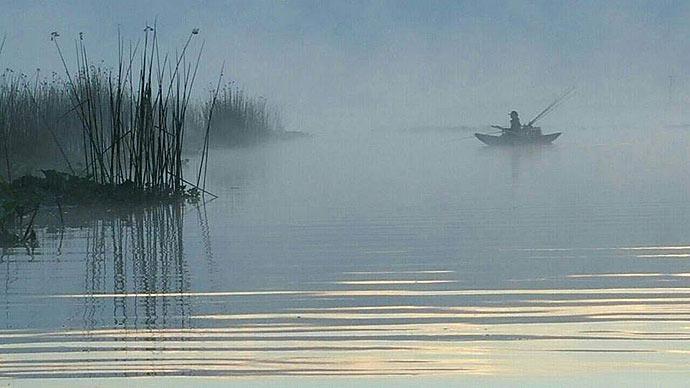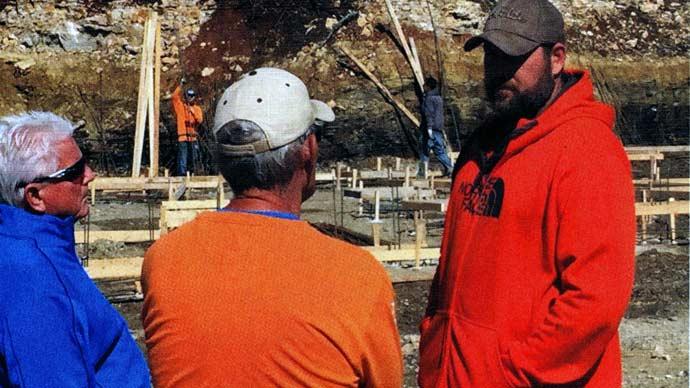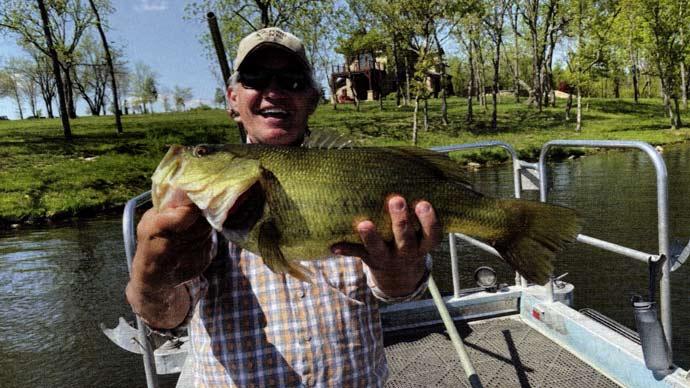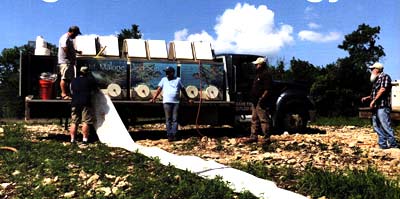
In parts 1-4, we've shared Greg and Deanna Graves' lake story—at least part of their story. For years, they've dreamed and planned to have their perfect place. One might call it a retirement ranch, but that's not the total truth. Although officially retired from his business career, Greg isn't finished—far from it.
Their dream was to have a place where their adult children and grandchildren could have outdoor adventures away from the bustle of the city. They wanted a place to share with friends and host events for their philanthropic efforts. Somewhere on the list, they wanted a place to enjoy...and catch big fish.
As Greg went through his due diligence to design, permit, and build the dam for their 50+ acre lake, his ultimate plan was to have a great fishing lake.
Fishing has been on his mind since Day One of his dreaming and planning. That's a constant.
As he went through the process of building the lake, he researched how to stock the lake properly. Forage fish first, then add his game fish. With the effort to create the best underwater habitat possible, he wanted a similar effort to properly stock the lake and then manage it as it developed.
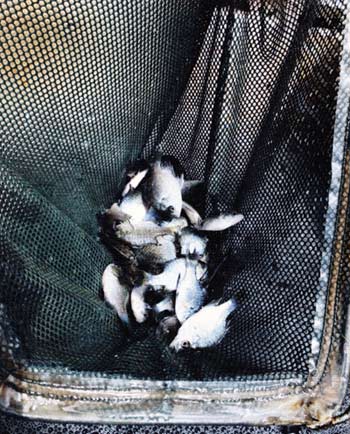
The lake was filling slowly and methodically, as the engineers expected. Keep in mind that planning first started in 2016, construction was finished in 2017, and the lake received enough water to start the stocking process in the spring of 2018.
Since the lake was partially full, around 40 acres of water and probably one-third of the total volume, it was decided to scale back from the initial numbers of fish projected and stock the lake at its current size. If it filled quicker than anticipated, he could always add more forage fish and wait a little longer to stock his game fish.
His stocking strategy was predicated on a timeline when he wanted to begin to catch quality fish...and for long-term reasonable odds to grow some true trophies. He wanted to grow the biggest Largemouth bass possible, with smallmouth bass to large sizes. Graves, a walleye fan, also wanted to fill the deep-water, cooler niche with that species. He loves to troll for those, plus walleye are excellent table fare. To that end, he knew the food chain would need to be expansive... and highly reproductive.
In May 2018, he stocked 80,000 small bluegill fingerlings from two sources: 8,000 medium-sized bluegills (3-4" long) from different hatcheries, 12,000 redear sunfish fingerlings, and 420 pounds of fathead minnows.
The fathead minnows' job was to begin to lay eggs all over the lake. They lay eggs on the underneath sides of firm objects—think all those rock piles and strategically placed logs—while the medium-sized bluegills begin spawning shortly after that. The small bluegills' mission was to grow at different rates and create several size classes, with the fastest-growing, larger ones spawning by late summer. The redear sunfish's job was to fill their niche and become established. They prefer aquatic vegetation because that's where snails grow.

Graves bought a couple of fish feeders to expedite the process as the forage fish population began to develop and expand. Fish didn't take long to find those feeders, and local populations of bluegills grew extremely fast.
The lake continued to rise slowly, and the forage fish base did what Greg had hoped it would. He reported seeing thousands of fathead minnows in schools cruising the shallows, chasing fish food pellets and pecking on them, eating as much nutrition as possible.
Aquatic plants began to grow, and bushy pondweed started establishing in some of the shallow zones designed into the habitat plan.
In November 2018, he stocked 1,000 walleye, 5-8" long, with 750 3-5" smallmouth bass.
In June 2019, he added 12,000 Largemouth bass fingerlings with great genetics. That's a lot of bass. But, here's the theory; by then, the lake covered its 60+ acres. Stocking 200 bass per acre was more than the customary recommended rates. If 50% of those bass are females, and females grow considerably larger, the odds of growing more trophies increase. It becomes a biological math game. If 100 are girls, and history suggests 20-30% of those fish will thrive and become over-achievers in that lake, then his odds of growing more bass to trophy sizes increase.
Sticking with that theory and the fact he'd already stocked walleye and smallmouth bass to jump-start the fishery and give them an advantage, he presumed the need to begin selectively culling some fish after 18 months. An electrofishing survey would tell that tale.
The plan was to add more feeders, ramp up the feeding program, catch and release fish, and monitor growth rates as the lake matured. Since then, he judged water clarity and saw visibility ranging from three to four feet each summer. The lake has topped its spillway several times and receives runoff from surrounding corn fields. The upper end of the lake has vegetated as expected and has become an excellent filter to extract nutrients from incoming runoff from farmland. It's also a nursery for forage fish.
In November 2020, Graves added another 250-walleye ranging in size from 6-8-inches long.
As an exclamation point, after his first electrofishing survey in May 2021, he stocked 30,000 Macrobrachium rosenbergii freshwater prawns to diversify the food chain and add creatures to feed in the expanding pondweed mats around part of the lake perimeter.
He also stocked 900 pounds of golden shiner minnows to add another element and more mass to the food chain. In August 2021, he got word that a nearby fish hatchery had some native crawfish available. He decided those would add another element, especially if they could be established. He stocked 15,000 of those as well.
Speaking of the electrofishing survey, you'll be amazed at the growth rates of the "best-of-the-best game fish. That will be the focus of Part 6, the last of this series.
Stay tuned for some very interesting data and ongoing results.
Reprinted with permission from Pond Boss Magazine

